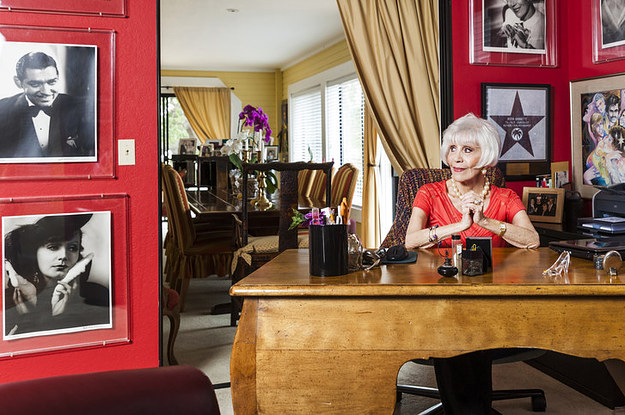
How Rona Barrett Became The Gossip Industry’s Forgotten Trailblazer
Barrett also understood the power of a name. When she introduced herself at the agency, she switched her birth surname to the less Jewish-sounding Barrett. Any notion of fan worship was also quickly disabused: Even as Fisher’s stardom expanded, in many ways thanks to Barrett’s work with the fan club, he hated Jewish girls. “Jewish girls are nudges,” Barrett overheard him say. “I wouldn’t date a Jewish broad if my life depended on it.”
Through the years, Fisher’s internalized anti-Semitism stayed with her. She was reminded of it every time someone told her how “smart” she was to have changed her name, and in the overarching unease when she started pitching the television networks. “I couldn’t put my finger on it until one day, a second-in-command took me aside,” she recalled. “‘You’ll never see yourself on national TV as long as there’s a single trace of Brooklyn in your voice.’ A trace of Jew, he meant.”
Barrett graduated from high school early and enrolled at NYU, but dropped out just a few credits shy of a degree. She was a fixture at Downey’s, a Midtown restaurant where all the up-and-coming talent hung out: Paul Newman, Sidney Poitier, Tennessee Williams, Joanne Woodward, Elia Kazan. She found work as a “girl Friday” at the largest pulp publishing houses, named for their cheaply produced magazines and genre novels. At the time, the majority of fan magazines were stuck in the past — classic Hollywood was dying; the types of stars, and mores that accompanied them, were slowly going out of fashion. Only the middle-aged ladies wanted to know what was going on with Clark Gable and Joan Crawford: The new audience wanted Dean and Brando and Natalie Wood and Elvis.
That was a swath of stardom Barrett, who’d positioned herself in the thick of the community, knew she could own. “You could see that there was going to be a sea change, and I wanted to be part of it,” Barrett told me. In late 1958, Evelyn Payne, the new, hip editor of Photoplay, bought Barrett’s idea for a column on “Young Hollywood” and sent her to Los Angeles, where she moved in with a then-unknown Michael Landon and his wife. New York friends introduced her to L.A. friends; press agent friends started spreading the rumor that she was the heir to Winchell and Parsons. The more people said it, the truer it became.
Barrett had her nose “fixed” without compunction, but still felt she needed to slim down to fit in with all the Mia Farrow types waifing around Hollywood. So she made an appointment with a woman named Louise Long. “She’d modeled Marlene Dietrich’s face from round to gaunt,” Barrett wrote in 1974. “She’d made Kim Novak from a Polish cow into an American princess.” And she did it, supposedly, through deep tissue massage — and the help of one of those old, vibrating bands of fabric you can still find in the corners of YMCAs.
After 10 appointments, Barrett says, her entire body was resculpted. She knew it was effective when, weeks later, a male star decided to casually take off his shorts during an interview — a come-on which Barrett gently rebuked, as she did with all advances from the stars. “Because they never got ‘into me,’” she explained, “I was able to get in them all the more.”
In this way, Barrett insinuated herself into the group of young, up-and-coming stars who were crossing over from movies to television to music and back again: Frankie Avalon, Nancy Sinatra, Fabian Forte, Tommy Sands, Jimmy Darren. Most of her information, Barrett recalled, came from things she overheard at parties. “I always weighed my words carefully,” she explained. “I never broke a confidence, never wrote to hurt anybody, believe it or not.”
